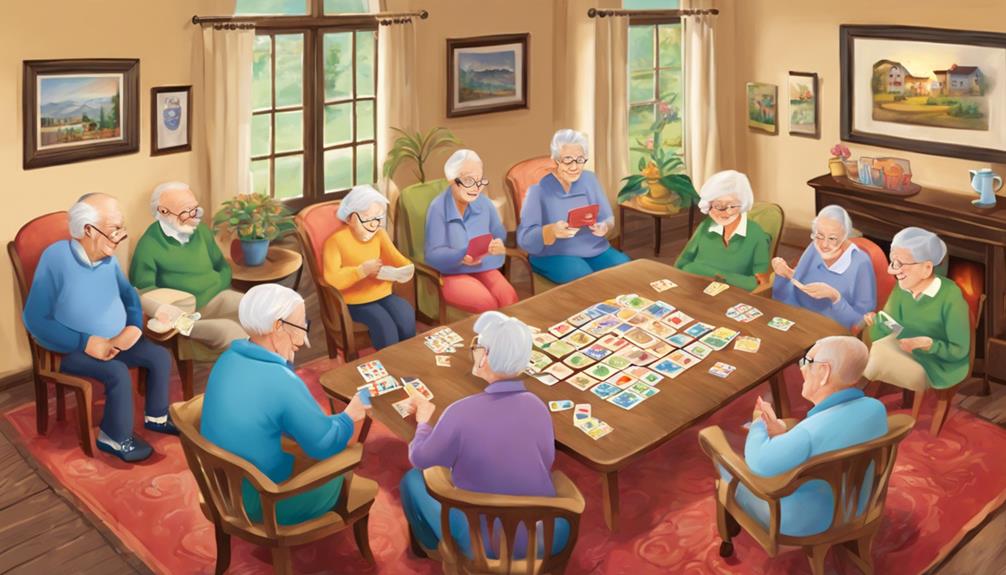Helping older individuals with dementia get dressed may seem like a straightforward task, such as picking out an outfit, but it can quickly turn into a difficult obstacle. Picture assisting a family member in getting dressed only to encounter resistance or confusion at every turn.
The intricacies of this process can be both emotionally and physically demanding. However, with thoughtful strategies and a tailored approach, navigating these dressing challenges can lead to meaningful improvements in the caregiving experience.
Let's explore some practical tips and insights that can make a significant difference in this aspect of caregiving for seniors with dementia.
Key Takeaways
- Simplify clothing choices to aid dressing.
- Support autonomy in clothing selection.
- Use easy closures like Velcro.
- Encourage independence and dignity through dressing.
Understanding Dressing Challenges in Dementia
Navigating the complexities of dressing challenges in dementia requires a deep understanding of the unique struggles individuals face in maintaining their independence and dignity. In the realm of dementia, dressing challenges can stem from a combination of cognitive decline, memory loss, and reduced physical abilities. Individuals with Alzheimer's or other forms of dementia often exhibit a strong desire for autonomy in selecting their clothing, which can lead to difficulties in getting dressed. Caregivers play a crucial role in supporting these individuals through these challenges, needing to be patient and empathetic.
Understanding the reasons behind these dressing issues is fundamental in providing effective assistance. It's essential to recognize that problems with dressing can manifest at any stage of dementia, necessitating tailored coping strategies. Simplifying clothing choices, establishing consistent routines, and approaching the task with a calm demeanor are all valuable techniques in helping individuals with dementia maintain their independence while receiving the support they need. Caregivers who grasp these nuances can significantly enhance the well-being and comfort of those under their care.
Strategies for Simplifying Dressing Tasks

To simplify dressing tasks for individuals with dementia, it's beneficial to lay out clothes in a specific order that streamlines the process and reduces confusion. By organizing clothing items in the sequence they're put on, such as undergarments first, followed by tops and bottoms, caregivers can make the dressing process more manageable. Additionally, limiting the number of clothing choices presented can help avoid overwhelming the person with dementia and facilitate decision-making. Introducing easy-to-wear clothing options with Velcro fastenings or front buttons can also simplify the task. These adjustments not only make dressing easier but also promote independence in activities of daily living.
Furthermore, providing clear and simple instructions during the dressing process can reduce confusion and assist the individual in completing the task. Caregivers should ensure that the selected clothing and shoes are comfortable, easy to put on, and non-slip to guarantee both safety and convenience for the person with dementia. By implementing these strategies, caregivers can create a supportive environment that enhances the overall dressing experience for their loved ones.
Promoting Independence in Dressing
Encouraging individuals with dementia to dress independently can significantly contribute to maintaining their sense of autonomy and dignity. When promoting independence in dressing, there are key strategies to consider:
- Choices: Providing options within a structured routine empowers individuals to make decisions about their clothing, fostering a sense of control and self-esteem.
- Structured Routine: Establishing a predictable dressing routine can help individuals feel more comfortable and confident in their abilities, reducing anxiety and confusion.
- Easy Closures: Offering clothing with simple closures like Velcro or magnetic buttons can make dressing easier and less frustrating, promoting independence.
- Time: Allowing ample time for individuals to dress themselves without feeling rushed allows them to complete the task at their own pace, fostering a sense of accomplishment and preserving dignity.
Enhancing Dignity Through Dressing Assistance

Preserving the dignity of individuals with dementia while assisting them with dressing involves a delicate balance of respecting their autonomy and providing necessary support. When approaching dressing assistance, it's crucial to respect privacy by creating a calm and private space for the individual.
Promoting independence can be achieved by offering gentle guidance and reminders rather than taking over the dressing process entirely. Simplifying clothing choices by selecting comfortable and easy-to-wear garments can reduce confusion and frustration.
Establishing a consistent dressing routine provides predictability and a sense of familiarity, which can be comforting for individuals with dementia. Additionally, opting for clothing items with elastic or Velcro closures instead of complex buttons or zippers can facilitate independent dressing.
Creative Approaches to Dressing Support
When assisting individuals with dementia in dressing, we can explore innovative approaches that cater to their specific needs and enhance their overall comfort and dignity. Here are some creative strategies to support dressing for seniors with memory challenges:
- Adaptive Clothing Options: Tailored garments designed specifically for individuals with dementia can provide ease of dressing and comfort.
- Easy-to-Wear Features: Incorporating elements like elastic waists and Velcro closures simplifies the dressing process, making it more manageable for both caregivers and seniors.
- Functional Solutions: Collaborations with experts in design and therapy have led to accessible clothing solutions that address the unique challenges faced by those with dementia.
- Dementia-Friendly Clothing: Prioritizing comfort and dignity, dementia-friendly clothing options aim to enhance the overall dressing experience for individuals with special needs.
These approaches not only streamline dressing routines but also contribute to maintaining personal dignity and well-being for seniors with dementia. Additionally, industry offerings like special needs clothing provide tailored solutions for individuals with Alzheimer's or dementia.
Frequently Asked Questions
How Do You Respond to Problems With Dressing in Dementia?
When responding to problems with dressing in dementia, we focus on understanding the individual's needs and desire for independence.
We prioritize choosing easy-to-wear clothing, limiting options, and establishing consistent routines.
Maintaining a calm presence during dressing challenges is crucial for a positive experience.
What Are Six Strategies That Are Useful When Assisting People With Dementia to Get Dressed?
When assisting people with dementia to get dressed, we prioritize their comfort and safety. We simplify clothing choices, establish routines, and offer gentle guidance.
Choosing comfortable, easy-to-wear clothes with elastic or Velcro closures is key. Nonslip shoes and adjustable clothing accommodate weight changes.
How Can I Help a Dementia Patient With Dressing?
When helping a dementia patient with dressing, we focus on simplicity and comfort. We offer clear instructions, prioritize easy-to-wear clothing, and choose non-slip shoes for safety.
Providing limited clothing choices respects their independence while considering adaptive clothing options can make the process smoother. By prioritizing their comfort and preferences, we ensure a dignified and respectful dressing experience for individuals with dementia.
What Are Three Challenges Caregivers Face When Caring for Dementia Patients?
When caring for dementia patients, we encounter challenges like navigating resistance due to loss of independence, promoting dignity while addressing hygiene needs, and providing gentle reminders for dressing routines. These difficulties require patience and adaptability from caregivers.
It's crucial to approach each challenge with empathy and understanding, recognizing the individual needs and preferences of the person we're caring for.
Conclusion
In conclusion, navigating dressing challenges when caregiving for elderly with dementia requires patience, creativity, and a gentle touch.
Remember, 'a stitch in time saves nine' – taking proactive steps to simplify dressing tasks can make a world of difference for both the caregiver and the individual with dementia.
By understanding their needs, promoting independence, and preserving dignity, we can ensure a more comfortable and respectful caregiving experience.
Stay compassionate and adaptable on this journey.










